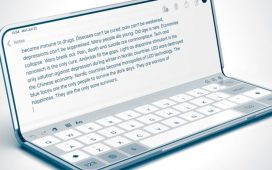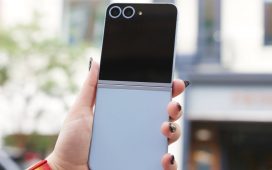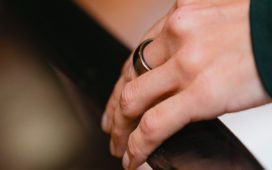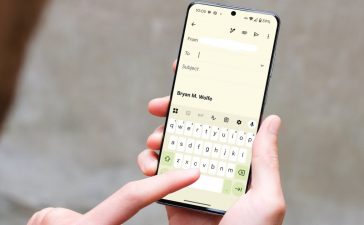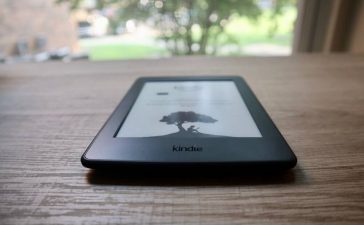The pandemic’s lasting effect on the U.S. population is evident in a new survey on connectivity and mobile tech, according to Deloitte. It shows a population fine-tuning the balance between their virtual and physical worlds.
Deloitte’s 2022 Connectivity & Mobile Trends Survey found that in 2022, the digital lifestyle has
become more normalized and standardized.
It found the average U.S. household now has a total of 22 connected devices (down from 25 in 2021). The slight drop came from having fewer smart home devices and entertainment devices. External streaming devices appear to be losing ground as smart TVs with built-in streaming come down in price. Connected exercise devices, likewise, are experiencing a drop in demand now that in-person gyms have reopened.
5G adoption

And it found that 5G ranks as the third most-important feature for consumers who are considering their next phone purchase, behind battery life and data storage. As smartphone users retire their older phones,
many are upgrading to devices with 5G capability. Last year, 56% of our respondents who had upgraded their phones in the prior year said their phones had 5G. In 2022, that portion is up to 68%.
GB Event
Lil Snack & GamesBeat
GamesBeat is excited to partner with Lil Snack to have customized games just for our audience! We know as gamers ourselves, this is an exciting way to engage through play with the GamesBeat content you have already come to love. Start playing games now!
With a houseful of connected devices comes a need for better connectivity: Over the past year, 15% of consumers upgraded their home internet services to achieve higher speeds and 44% purchased “signal boosters” like Wi-Fi extenders and mesh network equipment to increase coverage throughout the house.
A vast majority of these (87%) reported that their new equipment improved Wi-Fi performance. Only 8% said that they switched home internet service providers in the past year; this may reflect the time and effort required to arrange a new service and schedule technicians to rewire a home’s connection.
One in five switched mobile providers in the last two years, primarily because they wanted better value for the money. Just over one-third got a new smartphone in the last year, and another 32% are planning to get a new smartphone within the next year. This would indicate that most consumers upgrade their
phones on a two- to three-year cycle, in line with most traditional mobile carrier contracts.
Half of 5G smartphone users agree that the new connectivity standard enhances many capabilities and experiences. Compared to before they had 5G, approximately: One-quarter said they’re watching more
streaming videos; one in five said they’re using their 5G phones more as mobile hotspots and for payments; and one quarter of Gen Z smartphone users reported an increase in mobile gaming.
Overall, 48% of respondents said that 5G service is somewhat or significantly better than they
expected, and another 45% said it meets expectations. Only 8% of users were dissatisfied.
Remote work

In addition, the report found that remote experiences endure even as pandemic effects ease with 45% of surveyed consumers saying one or more household members were working from home at least some of the time (down from 55% in 2021).
About 47% of employed adults reported they have worked from home personally at least some of the time over the past year. Schooling from home has decreased more substantially than remote work, but 23% of consumers reported one or more household members were still attending school from home at least some of the time (down from 43% in 2021).
Over the past two years, the COVID-19 pandemic propelled US households into an unprecedented societal beta test that accelerated emerging trends in technology and connectivity. Almost overnight, lines blurred between consumers’ physical and digital worlds, and home became the headquarters for virtual working, learning, fitness, health care, shopping, socializing and entertaining.
In 2021, Deloitte explored how consumers adapted to abruptly crowded houses. They added new tech, entertainment, and smart home devices, upgraded their networks to improve connectivity, and settled
into the business of managing a wide range of devices and services.
Now, there are fewer people working and learning from home. Homes are less crowded, there’s reduced pressure on people, devices, and networks, and many of the acute challenges have subsided. Consumers are gaining mastery over their digital lives. They’re being intentional about which activities to do virtually and which in-person.
There’s still plenty of room to improve virtual work: Remote employees still need better connectivity, improved engagement with colleagues, and techniques for managing distractions and stress.
Managing wellness

The report also said 92% of consumers say they’re very or somewhat satisfied with their virtual medical experiences — up 10 percentage points from 2021.
They’re reporting that virtual work, school, fitness, and health care — in the right measure — are making
their lives better, healthier and more fulfilling.
Seven in 10 consumers who use their smartwatches and fitness trackers report the devices improve their fitness and health. At least seven in 10 of those with virtual work or school experiences under their belts would like virtual options in the future as well.
Forty-nine percent of consumers said they attended at least one virtual medical appointment as a patient in the past year — with millennials leading the trend at 59% — and 26% attended at least one virtual medical appointment where someone else was the patient.
Consumers intend to use virtual health care even after the pandemic recedes, but usage varies based on the kind of care they need. When it comes to checking chronic conditions and new symptoms, more than four in 10 said they would prefer to use virtual or hybrid options for an assessment.
Challenges of digital life

But it’s not all rosy. More than half of those surveyed are worried about the security vulnerability of their smartphones and smart home devices, and 40% of users are concerned about data security on their smartwatches and fitness trackers.
Nearly half (49%) of smart home users are concerned about hackers “taking over” their smart devices (for instance, changing thermostat settings).
They are worried about the potential for location data to be monitored. Technology companies, device makers, app developers, and telcos all have an opportunity to help consumers optimize their devices and
connectivity and enjoy better virtual experiences. Companies that can do this while giving consumers greater transparency and control over data security and privacy may be able to gain an edge
over the competition.
Overall, while 24% of consumers say they’re overwhelmed by the devices and subscriptions they need to manage, this was down from 32% last year.
Deloitte did a survey of 2,005 consumers. All data was weighted to the most recent U.S. Census to arrive at a representative view of U.S. consumers’ opinions and behaviors.
On average, early adopters’ households have more kinds of devices (20) and more total devices (31) than others. (Households in general average 14 kinds of devices and 22 total devices).
Overall, 24% of consumers say they’re overwhelmed by the devices and subscriptions they need to manage — down from 32% last year. For smart home technology, 27% of users reported that these
devices add too much complexity to their lives.
The feeling of being overwhelmed by devices and subscriptions rises with both the number of devices and the number of people working and schooling from home (figure 15). Over the past year, as households gained experience and workers and students returned to the office and classroom,
management became a bit easier.
Notably, early adopters (with 31 devices on average) felt tech fatigue most acutely: 36% said
they’re overwhelmed by devices and subscriptions.
When it comes to smart homes, ownership of connected devices is flat, on average, compared with Thirty-one percent of respondents have smart home security systems; 29% have outdoor security cameras and 28% have doorbells with built-in cameras. One-quarter have smart lighting solutions. Fifty-three percent of smartphone users with smart locks use their phones to lock and unlock their homes, and 51% of those with security systems or cameras use their phones to manage these systems.
Voice-enabled smart speakers saw a massive surge in 2020, so their recent decline is seen as more of a correction than a cause for concern.
Americans are still seeking a better balance for their digital and physical worlds. They’re looking for experiences that enhance their well-being and productivity while reducing complexity.
Deloitte said companies should consider new ways to communicate the benefits of 5G and build novel
experiences that take better advantage of its increased speed. New immersive experiences, for example, will likely require 5G to work; they will also generate much more data from user interactions and evolve to require additional connected hardware such as virtual reality, augmented reality, wearable, and haptic interfaces. Whether it’s a desire for virtual reality gaming, real-time augmented reality apps, or mobile access to the metaverse, consumers have shown that they’re ready for the 5G future, Deloitte said.


